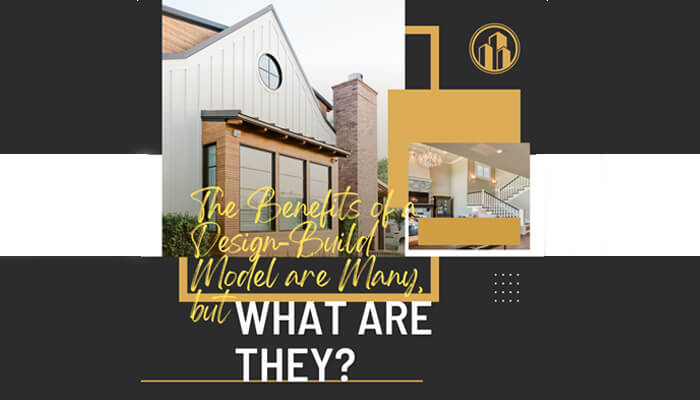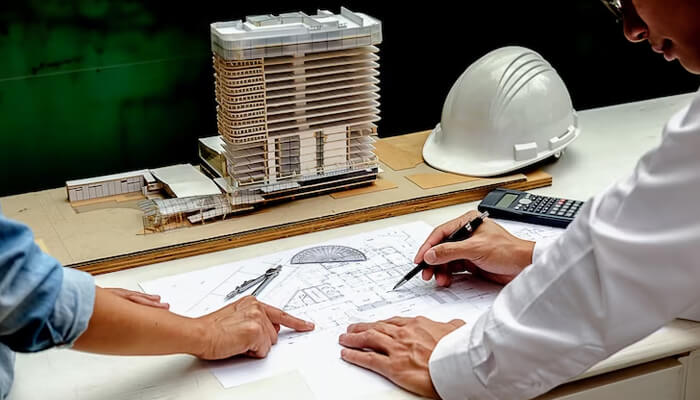The world of construction and homebuilding continues to evolve. New methods and approaches are now emerging to streamline processes and deliver exceptional results. One such approach that’s gaining popularity is the design-build model. This article will explore the benefits of the design-build model and compare it to other traditional methods. We will discover why the design-build method has become a preferred choice for many homeowners and builders alike. Let’s dive in.
Understanding the Design-Build Model
Design-build integrates design and construction into a seamless process. The model combines design and construction contracts, unlike the traditional design-bid-build approach, where they are separate. Here, the homeowner or developer only needs to work with a single team throughout the project, from concept and design to construction and completion.
The design-build method merges construction into a single entity, creating an integrated approach. So, the approach mainly fosters collaboration. The architects and contractors in the conventional design-bid-build method will always work together.
Such a collaborative environment contributes to the following:
- Promotes effective communication
- Facilitates decision-making
- Helps meet project goals.
Therefore, the design-build model creates a cohesive team of architects, engineers, and builders. All work together towards a common objective.
The Design-Build Construction Process
One of the key aspects of the design-build model is its unique construction process. It begins with a comprehensive initial consultation.
The design-build team collaborates with project owners. They define the project’s vision, requirements, and goals together. They work on the conceptual design phase as the team progresses and strive to translate their project vision into concrete concepts.
The architects, engineers, contractors, and other professionals work together as a unified group. This fosters effective communication, improved coordination, and project efficiency. The design-build method has several stages, including the following:
1. Concept and Home Design
Custom home experts emphasize the significance of placing people before the process. The home builders are creating a good working relationship. They want to ease the process of designing innovative custom home concepts. Elk Ridge Custom Homes’s goal is to reflect your unique lifestyle and design intent, providing a space where you can truly live and thrive. In fact, it’s always important that the design-build team work closely with the homeowner or developer. Together, they understand the vision, goals, and requirements. Hence, they can develop initial design concepts, create presentations for approval, and look forward to feedback.
2. Pre-construction Planning
After finalizing the design, the team moves forward with detailed planning. This includes cost estimation, project scheduling, and acquiring the required permits and approvals.
With the plans in place, the construction phase begins. The design-build team oversees the construction process. They ensure adherence to quality standards, budgetary constraints, and timelines.
3. Completion
As the project nears completion, the team conducts final inspections. They address any necessary adjustments or modifications. Once all requirements are met, the homeowner takes possession of their new space.
Design Build vs. Design Bid Build
As stated earlier, it’s important to understand the benefits of the design-build model by comparing it with the traditional design-bid-build approach. Here, the project owner engages an architect or design team under the design-build method.
They are in charge of developing the plans and specifications for the project. Upon the completion of the designs, the owner requests bids from multiple contractors to carry out the construction work.
Have a complete understanding of the benefits of the design-build model. Comprehend its key distinctions from the traditional design-bid-build approach.
Advantages of The design-build model
1. Customized Homes
Homeowners have the freedom to create personalized living spaces. It will reflect unique preferences and lifestyles. The design-build advantage empowers homeowners to take part in the design process. They ensure that the vision is well translated into reality. There are endless possibilities for customizing your home. This ranges from architectural features to interior finishes. Homeowners can integrate an energy-efficient system and innovative home technologies.
2. Single Point of Responsibility
In the design-build model, there is a single point of responsibility for the entire project. The purpose is to have a dedicated point of contact throughout the construction process. This simplifies decision-making. It minimizes the chances of miscommunication or conflicts among the various parties involved.
3. Enhanced Communication and Collaboration
The design-build model encourages open stakeholder communication and collaboration. The architects, engineers, and builders work together as a cohesive team. They foster a shared vision and a common understanding of project goals. This leads to better performance and smoother project execution.
4. Faster Project Delivery
The design-build model can reduce the project timeline. Eliminating separate design and construction contracts enhances efficiency through streamlined processes. Collaboration between design and construction teams enables early identification and resolution of potential issues. This helps in ensuring timely delivery. Accelerated project delivery is particularly beneficial for time-sensitive projects with tight deadlines.
5. Cost Savings
Another significant advantage is its potential cost savings. Always involve the construction team from the beginning. Working with a team allows you to address potential design issues or budget constraints proactively. The builders can provide valuable input on cost-effective construction methods and materials. They will help optimize the project’s budget without compromising quality.
6. Increased Accountability
The design-build model enhances accountability as a single entity manages the entire project. This reduces the likelihood of finger-pointing or disputes between different parties. The integrated team takes prompt action. They assume responsibility for addressing any project issues or challenges that may arise. This fosters a strong sense of accountability and ownership.
Wrap-Up
The design-build model offers numerous benefits. This is what makes it an attractive option for homeowners and builders alike. The model delivers exceptional results. By streamlining communication, it’s easier to reduce project timelines and promote cost savings. It fosters collaboration and consolidates accountability to ensure successful project outcomes.
Take advantage of the design-build model’s inherent advantages and shorten the building process. The improved collaboration will also maximize cost effectiveness and unlock the full potential of your ideal home. The seamless project coordination helps cut down construction times.
It doesn’t matter if you’re starting a home improvement project or thinking about initiating a business. Throughout the construction journey, you will get to feel the transformational impact of this cutting-edge technique.




